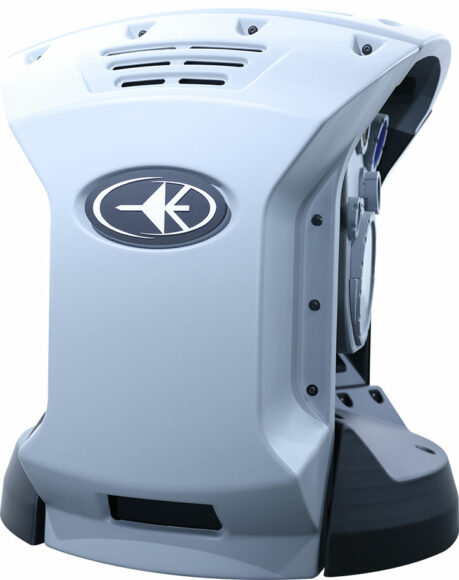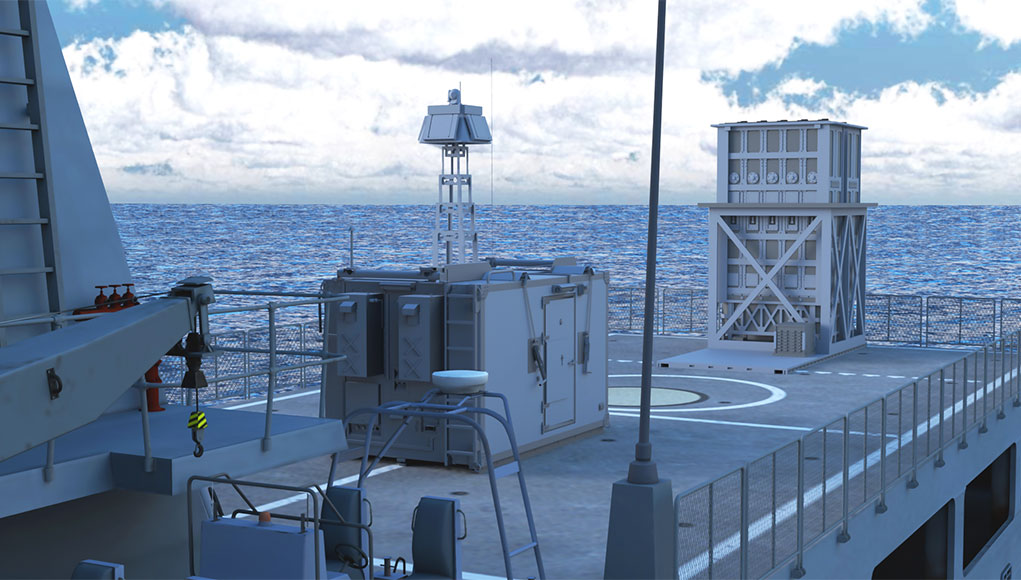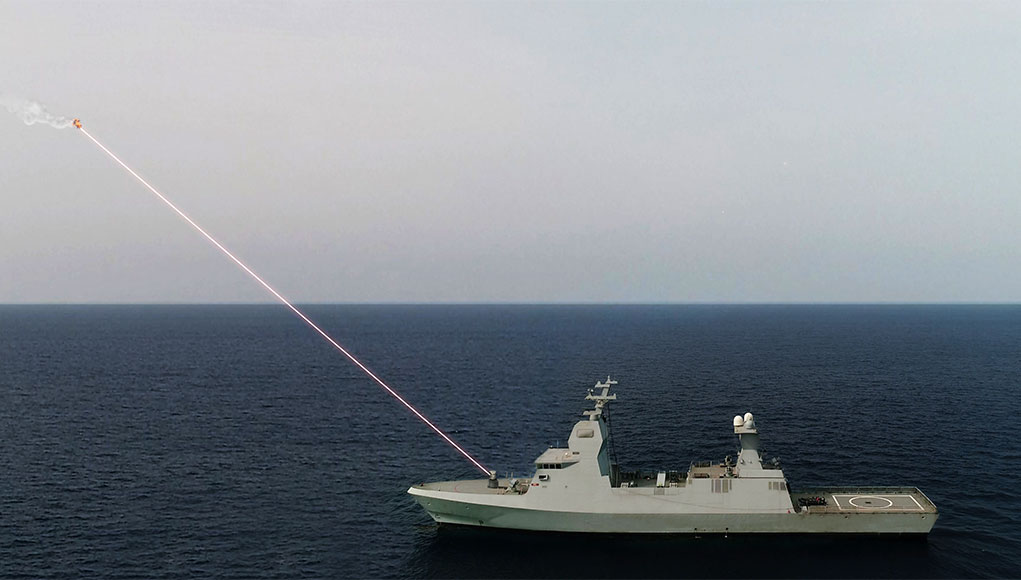Israel’s Rafael Advanced Defense Systems has recently introduced two naval air defense systems designed to boost the defense capabilities of naval forces against the increasing threat of missiles, rockets, and unmanned aerial systems. The traditional air defense systems were created to protect naval vessels against Anti-Ship Missiles (ASM) aimed at the ship from wave-top height or low approach and pop-up maneuvers.
But the threat to naval forces is changing, and the latest threat includes guided and unguided rockets, ballistic missiles, drones, and loitering weapons used separately or simultaneously in coordinated attacks. Rafael’s naval portfolio is growing to address those changing threats, identifying new solutions to current and future challenges.
In March 2022, Rafael successfully completed a series of ground-breaking live field tests with a High-Energy Laser (HEL) interception system called IRON BEAM against steep-track threats such as ballistic missiles and loitering weapons. RAFAEL is now offering this HEL as a naval defense system. The company also introduced a new configuration of its C-DOME shipborne defense system, a derivative of its combat IRON DOME. The new C-DOME Mission Module comprises a radar, a battle management unit, and a separate firing unit comprising 20 interceptors.

The IRON BEAM naval variant is known as the NAVAL IRON BEAM, which is designed to improve the vessel’s defense capability at the inner layer against incoming targets like short-range ballistic rockets, drones, and unmanned aerial vehicles (UAVs) of various sizes. In the future, the NAVAL IRON BEAM is also expected to defeat anti-ship missiles. The main advantage of a high-energy laser is its ability to maintain operation as long as adequate electrical power is supplied, making it a cost-effective complementary defense solution in addition to kinetic air defense capability.
The advantage of a high-energy laser is its ability to maintain operation as long as adequate electrical power is supplied, thus having an ‘unlimited magazine.’ Typically, HEL replaces legacy Close-In Weapon Systems (CIWS) such as the Phalanx and Goalkeeper used by Western Navies and Kashtan and AK-630 used by Navies dependent on Russian or Soviet-built ships. Both eastern and western CIWS rely on rapid-firing guns, with one or two units mounted on the ship – front and aft, providing the last layer of air defense against antiship missiles. Similar systems have already been tested in operational use by the US Navy and German Navies, although none have seen operational deployment. Like its land-based variant, the naval application can be integrated into an existing air defense system such as the IRON DOME, thus constituting a complementary, cost-effective defense solution in addition to the kinetic air defense capability.

The new C-DOME Mission Module was developed to address specific applications requiring existing vessels, such as Operational Patrol Vessels (OPV), auxiliary ships, and other naval support ships, to bolster their air defense and counter-drone capacity without relying on specially designed platforms such as corvettes and frigates. The C-DOME Mission Module consists of a radar, a battle management unit, and a separate firing unit loaded with interceptors. The new concept enables the vessel to mount a firing unit on the deck, a new configuration for the launchers as they are usually mounted several floors below the deck. This capability allows navies to introduce advanced air defense capabilities without needing deck penetration, vessel hull retrofit, or complex platform integration.
Rafael has unveiled these naval air defense systems to augment the defense capabilities of naval forces against the increasing threat of missiles, rockets, and unmanned aerial systems. The company’s Executive Vice President, Dr. Ran Gozali, Head of the Land and Naval Systems Directorate, stated that evolving threats require dynamic solutions. Rafael’s naval portfolio is constantly growing and upgrading to address current and future challenges.
The naval defense systems designed by Rafael can be integrated into an existing air defense system, such as IRON DOME, to provide a complementary, cost-effective defense solution. This approach expands air defense coverage by fielding C-DOME Mission Modules on ships not originally configured for this role. The new configuration introduces advanced air defense capabilities without complex platform integration, deck penetration, or vessel hull retrofitting.
In conclusion, Rafael’s naval air defense systems, including the NAVAL IRON BEAM and the C-DOME Mission Module, are designed to address the evolving threats naval forces face, including ballistic missiles, guided and unguided rockets, loitering weapons, and drones. These defense systems are cost-effective and complementary to kinetic air defense capabilities. Rafael’s continuous focus on research and development is rapidly identifying new solutions to address current and future challenges.




















